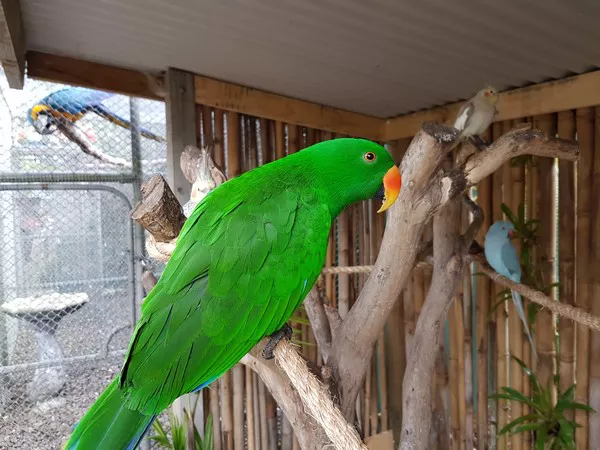Tortoises are fascinating creatures known for their longevity and unique characteristics. While many people are familiar with the large and majestic tortoises like the Galapagos or Aldabra tortoise, there is also a world of miniature tortoises that capture the hearts of reptile enthusiasts. In this article, we will delve into the realm of small tortoises, exploring the smallest tortoise species available for purchase and learning about their characteristics, care requirements, and suitability as pets.
The Egyptian Tortoise (Testudo kleinmanni):
The Egyptian tortoise, also known as Kleinmann’s tortoise, is one of the smallest tortoise species in the world. Native to Egypt and Libya, it measures between 4 to 6 inches (10 to 15 cm) in length when fully grown. This diminutive tortoise has a beautiful shell pattern and is well-suited for small living spaces. However, due to its endangered status in the wild, it is essential to ensure that captive-bred individuals are obtained from reputable breeders to support conservation efforts.
The Egyptian tortoise is a hardy species but requires specific care to thrive. They prefer a warm and dry habitat with access to both UVB light and a basking spot to regulate their body temperature. Their diet primarily consists of leafy greens, vegetables, and occasional fruits. Providing a suitable enclosure with adequate space for movement, a secure outdoor area for natural sunlight exposure, and a proper diet are essential for the well-being of Egyptian tortoises.
The Pancake Tortoise (Malacochersus tornieri):
As the name suggests, the pancake tortoise possesses a flat, flexible shell that allows it to wedge itself into crevices for protection. Native to East Africa, these tortoises measure around 5 to 7 inches (13 to 18 cm) in length. Their unique shell adaptation makes them excellent climbers, adding to their charm as pets. Pancake tortoises have specific habitat and dietary requirements, so it is important to research their needs thoroughly before considering them as pets.
Pancake tortoises thrive in warm and arid environments. Their enclosures should have ample climbing opportunities and hiding spots to replicate their natural habitat. A varied diet comprising leafy greens, grasses, and occasional insects is essential for their health. Maintaining proper humidity levels and providing a basking spot with UVB lighting are crucial for their overall well-being.
The Russian Tortoise (Agrionemys horsfieldii):
Although not as tiny as the Egyptian or pancake tortoise, the Russian tortoise is still considered small in comparison to its giant relatives. Native to Central Asia, it typically reaches a size of 6 to 10 inches (15 to 25 cm) in length. Russian tortoises are hardy, adaptable, and have a gentle nature, making them popular pets for tortoise enthusiasts. They require proper care, including a suitable enclosure, a balanced diet, and a warm environment to thrive.
Russian tortoises thrive in a habitat that replicates their natural environment. This includes a well-ventilated enclosure with both a heated basking area and cooler areas to regulate body temperature. Their diet consists of a variety of fibrous greens, weeds, and grasses. These tortoises also require exposure to UVB light for proper calcium metabolism.
The Hermann’s Tortoise (Testudo hermanni):
Hermann’s tortoise is another small species originating from the Mediterranean region. It is known for its beautiful markings and relatively small size, measuring between 6 to 8 inches (15 to 20 cm) in length. Hermann’s tortoises are popular among reptile keepers due to their manageable size, docile nature, and relatively straightforward care requirements. Providing a suitable habitat and a varied diet are crucial for their well-being.
Hermann’s tortoises thrive in a semi-arid environment with access to a warm basking spot and a cooler area for thermoregulation. Their diet consists of a mixture of grasses, leafy greens, and edible flowers. They also require regular exposure to natural sunlight or UVB lighting. Creating a stimulating and enriching environment with ample space for exploration is important for the mental and physical well-being of Hermann’s tortoises.
The Greek Tortoise (Testudo graeca):
The Greek tortoise, also known as the spur-thighed tortoise, is a small to medium-sized species found in various regions surrounding the Mediterranean Sea. It grows to a size of approximately 8 to 10 inches (20 to 25 cm) in length. Greek tortoises are known for their distinctive spurs on their hind legs and their ability to adapt to different environments. They require proper husbandry, including a warm and well-ventilated enclosure and a balanced diet consisting of various plant matter.
Greek tortoises need an enclosure that provides both a warm basking area and cooler areas for temperature regulation. They have a herbivorous diet, primarily consisting of leafy greens, weeds, and some fruits. It is important to provide them with UVB lighting to aid in calcium absorption. Maintaining proper humidity levels and creating a secure enclosure are also important aspects of their care.
Care and Considerations:
While small tortoises may appear adorable and manageable, it is crucial to note that they still require proper care and attention. Before acquiring a tortoise, it is essential to research their specific needs, including habitat requirements, dietary preferences, temperature regulation, and socialization. Tortoises, regardless of their size, have long lifespans, and their care is a long-term commitment.
Additionally, it is important to obtain tortoises from reputable breeders who prioritize the welfare and health of the animals. Captive-bred tortoises are generally preferred as they help to conserve wild populations and are more likely to thrive in domestic environments.
Conclusion:
While the world of small tortoises offers captivating options for reptile enthusiasts, it is vital to approach their care responsibly and ethically. Understanding the needs of these tiny creatures, providing them with appropriate environments, and committing to their long-term well-being are key factors in ensuring a successful and fulfilling pet-owner relationship. Whether you choose a petite Egyptian tortoise or a charming pancake tortoise, remember that these marvelous creatures can bring joy and wonder into your life with their unique personalities and intriguing behaviors.
Related topics:


























